How LeBron Cheats Father Time
The methodology and mentality of the man who wants to play forever.
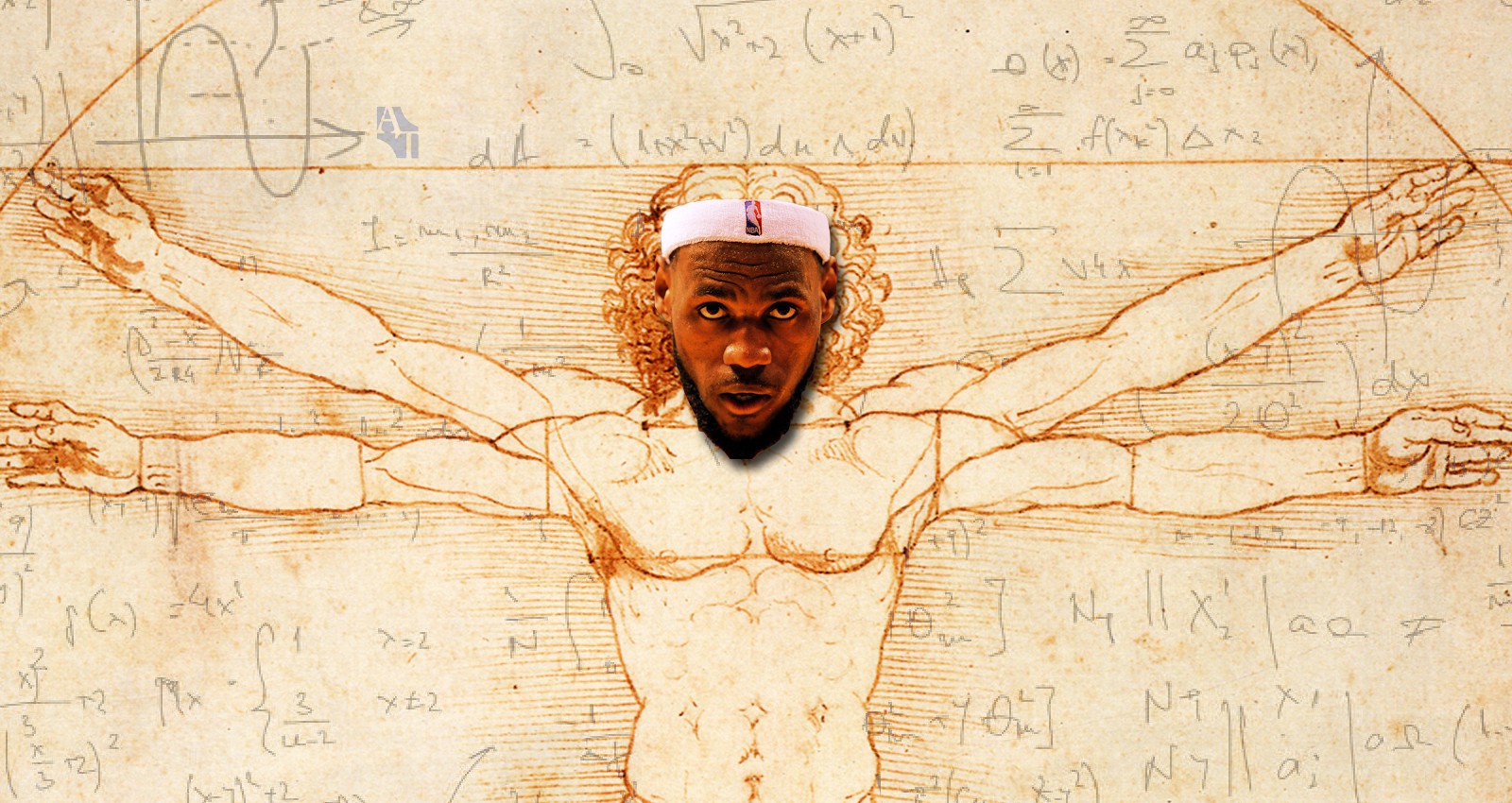
The old saying goes “you can’t beat father time” but LeBron’s durability and play this season has left many questioning this age-old rationalization.
In his 15th season, LeBron played all 82 games for the first time in his career, averaged a league-high 36.9 MPG, and shouldered arguably his biggest role yet — playing with essentially two totally different rosters.
LeBron’s mindset and commitment to taking care of himself — including spending upwards of $1.5 million annually according to his manager Maverick Carter — has been integral to him bucking the ageing trend. You might be wondering, how exactly does an athlete spend that much on their body? Well, that’s what I’m here to explain.
Through my unique lens as a Doctor of Physical Therapy, I’ve witnessed first-hand how the human body can break-down while playing sports, and the lengths athletes will go to in order to prevent that from happening. In the following piece, I delve deeper into the mindset, methods, and techniques LeBron uses in his constant pursuit of health and recovery, to answer some big questions about how he prepares. Questions like:
- What mentality underlies LeBron’s commitment and dedication to durability?
- During the off-season, how does LeBron create his physical and mental foundation?
- Once the season begins, how does LeBron maintain that physical and mental foundation?
- What overlying factors and structure are integral to Lebron’s recovery?
- What truly sets Lebron apart from his professional athlete peers?
I. LeBron’s underlying mentality
There’s one word that sums up LeBron’s mentality when it comes to his health and wellness: PREVENTION.
Most injuries — not including acute, impact injuries like having someone run into your knee, falling a certain way, or getting hit — build up over time until reaching a boiling point (a threshold). Once that threshold is met and spills over, the damage is done.
Think of your mind and body like a car. If you don’t consistently take care of your car and ignore the little rattles and squeals (guilty as charged), eventually you might end up at the mechanic with a blown gasket, timing belt, etc — something far more severe than if we had just changed the dang oil in the first place.
Taking the necessary steps to prevent that boiling point or gasket from exploding is going to save you a lot of grief in the end. In other words, proactive prevention.
LeBron embodies that mentality — he’s in his 15th year and had played over 50,000 minutes entering the 2017–18 season. For reference, that’s 2000 more minutes than MJ played in his entire career.
The GSC panel comments on NBA Commissioner Adam Silver’s latest idea to increase interest in the WNBA.grandstandcentral.com
These minutes include SEVEN STRAIGHT high-intensity, high-pressure playoff runs to the Finals and multiple Olympic games as well. Through it all, he’s been more durable and played at a higher level than players with far less mileage.
This durability is a testament to his unwavering commitment to proactive mental and physical health, and understanding of the long-term picture. An understanding that “what I’m doing today to care of my mind and body may not pay off for years to come but it will, eventually”.
In the following sections, which I’ve split into off-season and in-season, I get into the specifics of how LeBron has taken care of himself mentally and physically.
So here we go:
II. The Off-Season
A. Micro (tissue level — muscle, cartilage, etc)
During the off-season — where he doesn’t have to deal with the grind and exertion of NBA games, the constant travel, and hectic schedule — LeBron’s goal is to build a foundation of mental and physical strength, incrase performance, and create a buffer against injury.
The overall theme is BUILD. Build strength, build resilience, build the foundation.
However, before LeBron can build, the first task is allowing his muscle and joints to recover from the brutal season and playoffs — taking time off to let his body recover:
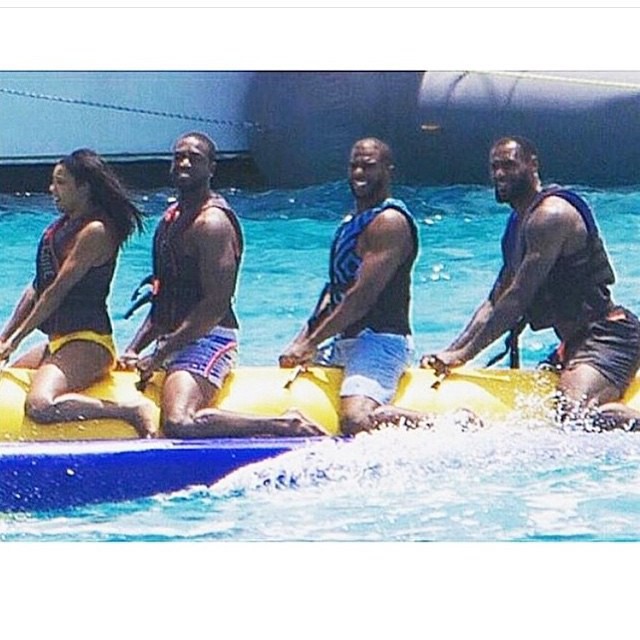
Once he’s ready to resume training, it’s all about muscular strength, power, and mobility. He’s training twice a day, 5 days a week.
LeBron’s lifting regiment focuses on lower repetitions, higher weight exercises to increase his strength, power, explosiveness, and overall performance capacity. He makes sure to layer in variable routines that challenge his body — a key to generating new muscle.
Additionally, he focuses on activities that work his major stabilizing muscles, like the legendary “core”. He accomplishes this with core specific activities that destabilize his center of gravity and force his core muscles to engage. Here’s an example:

He also takes Pilates classes to improve his functional core strength and mobility. Core strength has become a focus of LeBron’s since he began having lower back problems in the 2015 season.
The core works together with the lower back to control movement and it sets the foundation for the rest of your body.
There’s a saying in the physical therapy world — “proximal stability for distal mobility”. In other words, a stable base (the low back and core) unlocks better movement of the extremities. Therefore, having a stable foundation is critical for LeBron.
Not that we’ve covered his joint and tissue, let’s move onto systemic factors…
B. Mezzo (systemic factors)
1 — Bio-Mechanics
Bio-mechanics refer to how the body moves and operates. For example, the way you run or land is influenced by bio-mechanical properties.
After dealing with back trouble over a 10-month span in 2015, LeBron hired Donnie Raimon — a former Navy seal who specializes in biomechanics.
In the off-season, LeBron works on any bio-mechanical deficits he may have. I’m not privy to his specific training plan but lets go through a hypothetical to illustrate the point.
Let’s say LeBron and his team notice that he’s landing with excess knee valgus (the knee dropping inwards) which can increase the risk of knee pain and knee injury. Here’s what it looks like:
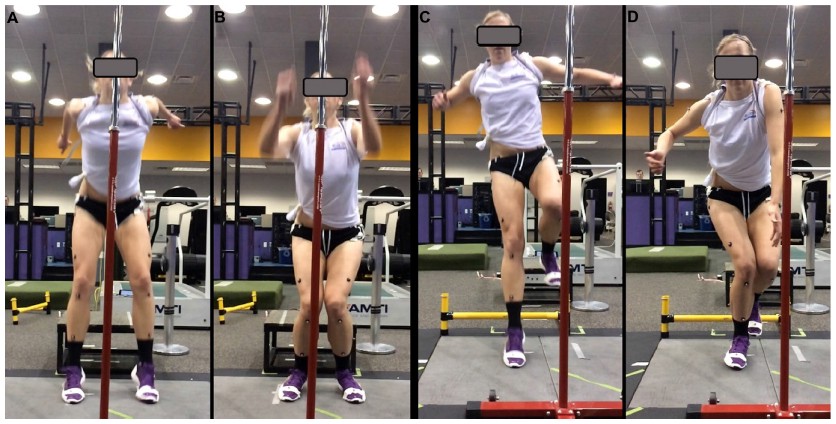
His medical team would first identify the underlying cause(s).
It may be some muscular weakness or poor muscle activation (meaning the muscle isn’t firing when it needs to), or it could be related to neuro-muscular control (how the muscle unconsciously responds during a movement).
After that, the team would implement a plan to address those root causes. That’s a hypothetical example but hopefully it gets the general point across.
2 — Proprioceptive and Vestibular systems
Both of these systems provide feedback and awareness to the brain about where your body is in space. They are responsible for optimizing movement via anticipatory and micro-adjustments of body positioning, muscular activation ,and so on.
LeBron trains these system with balance and adding multiple layers to his workouts. For example, look at this photo and keep the caption in mind:
“Core and mind stability”. These layered activities require increased mental focus and feedback and challenge the proprioceptive and vestibular systems.
C. Cardiorespiratory system
The cardiorespiratory system is comprised of the heart, blood vessels (arteries and veins), the blood that is carried throughout the body (nearly 5 liters worth), and the lungs.
All together, it’s responsible for transporting oxygen, nutrients, hormones, and getting rid of cellular waste products. It’s been called the “hardest working organ of the body”.
Fresh off the regular season awards, we made our picks for the All-NBA Teams…in draft form.grandstandcentral.com
LeBron optimizes his cardiorespiratory system with 2 different training methods:
The first focuses on longer duration, lower intensity cardio — like spin and versaclimbing classes. This creates two types of adaptations in the body:
- Peripheral — these adaptations increase the efficiency of blood vessels and muscle tissue. The blood vessels are able to deliver more blood and oxygen while taking away more waste products, while the quality of the muscle tissue increases. This results in a higher work capacity for less energy required.
- Respiratory — these adaptations increase the efficiency of the lungs. They can take in more oxygen with less work.
The second type of training method focsues on shorter duration, high intensity cardio— like sprints, short distance rowing, and circuit training. This leads to “central” adaptations in the body:
- Central — these adaptations increase the efficiency the heart. The heart can pump more blood while not working as hard.
The last, but certainly not least, benefit of training the cardiorespiratory system is boosting the “aerobic threshold”. Aerobic means “requiring oxygen”.
Aerobic energy is the most efficient way that your body produces energy. It is trained via longer duration, low intensity cardio.
Once the body crosses over the aerobic threshold, into the “anaerobic system” — or “without oxygen” system — the body is producing energy much less efficiently. This system also creates negative by-products such as lactic acid. Lactic acid can — indirectly — have an unfavorable effect on LeBron’s muscle contraction and therefore performance.
Here’s a graph to visualize the aerobic and anaerobic systems as they relate to lactate concentration and intensity of activity:
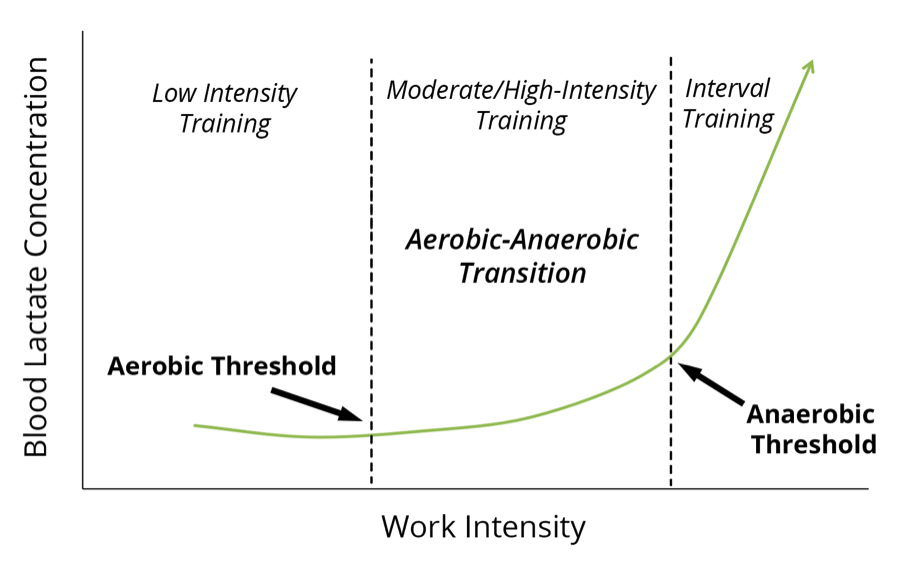
When LeBron trains his aerobic system — resulting in higher levels of oxygen being delivered more efficiently — this bumps the aerobic threshold to the right. This means he can now engage in higher intensity activities before he crosses over from aerobic (efficient energy) to anaerobic (inefficient energy). He can now work harder and longer on the court while decreasing his in-game and between game recovery times.
D. Central Nervous System (CNS)
The CNS has two main parts: the sympathetic nervous system (SNS), known as the “fight or flight” or stress response (for a detailed review, check out my piece on Ty Lue’s chronic stress), and the parasympathetic nervous system (PSNS), known as the “rest or digest” or relaxation response.
In the off-season, it’s critical for LeBron to relax and balance out the constant stress response that accompanies the regular season and playoffs. He’s taking on a huge role for his team, under the largest microscope of any player in the league.
That type of prolonged, high intensity stress and activity can result in a condition called “CNS fatigue” . CNS fatigue negatively affects muscle function and skill performance.
Expeditions like the banana boat trip help LeBron down-regulate his SNS response and achieve a CNS systemic balance (and scheme how to create future super-teams).
Lastly, LeBron’s off-season schedule, generally, isn’t as regimented and he varies his activities. This creates a more relaxed and calming atmosphere.
We’ve covered most of LeBron’s off-season but there’s one key topic left, nutrition.
We have the technology, it's time to start using it.grandstandcentral.com
E. Nutrition
LeBron, under the careful guidance & supervision of the team nutritionist, optimizes his nutrition in the off-season by eliminating grains, dairy, and processed foods.
This is beneficial for both the gastrointestinal (GI) and metabolic systems, and helps him shed some weight.
First, lets talk about the GI system.
1. The GI system
The GI system serves two primary functions — digesting foods and absorbing nutrients.
The processed foods, grains and dairy that LeBron eliminates often contain added sugars, poorly digestible ingredients, and spike insulin levels while increasing fat deposition.
Additionally, grains and dairy account for nearly 85% of food sensitivities — irritating the intestines, bowels, while increasing systemic (body-wide) inflammation. This results in malabsorption of nutrients, increased sensitivity to pain, and impaired recovery, amongst many other things.
2. The Metabolic system
The metabolic system is made up of multiple processes (that I won’t detail here) that work together to convert food into energy and help eliminate by-products.
LeBron’s off-season nutrition plan puts him into a metabolic state of ketosis. In this state, the body uses fat — a very efficient and stable fuel source — for fuel. Some studies even show that ketosis improves mental cognition and clarity.
3. Weight
In recent years, LeBron has focused on reducing calories in the off-season to get leaner and shed weight. This decreases the load and stress on his body.
A salient example of LeBron’s off-season weight loss was his 67 day paleo (no carbs, no sugar) diet in the summer of 2014. Here are before/after pictures:
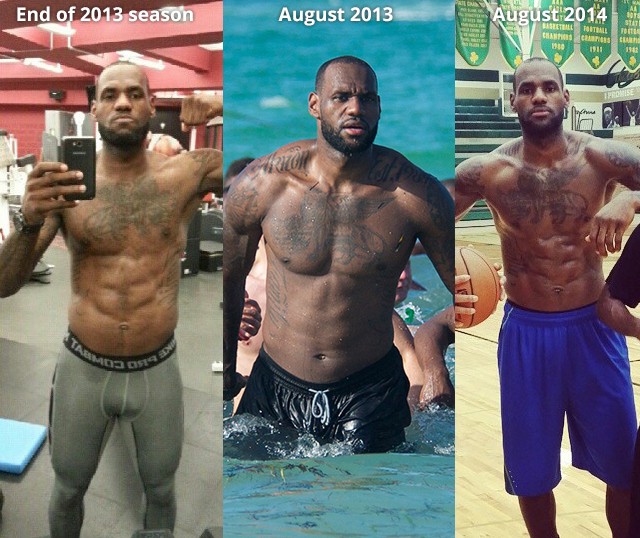
Not only did he drop nearly 20 pounds to go from 270 to 250 but he also increased his micro-biome and gut health and adapted his body to using highly efficient ketones for fuel. He adopted this diet after he saw the effect it had on Ray Allen’s fitness in the summer of 2013.
So that’s LeBron’s off-season, now onto LeBron’s in-season routines and methods.
III. During the Season
LeBron’s theme during the season is MAINTAIN & RECOVER. Maintain the strength and foundation that was built in the off-season and recover as quickly as possible.
Let’s follow a series of days in the life of LeBron– from immediately following the game to travel to at home to pre-game — to understand and uncover his routines and methods for maintaining and recovering
A. Immediately following the game
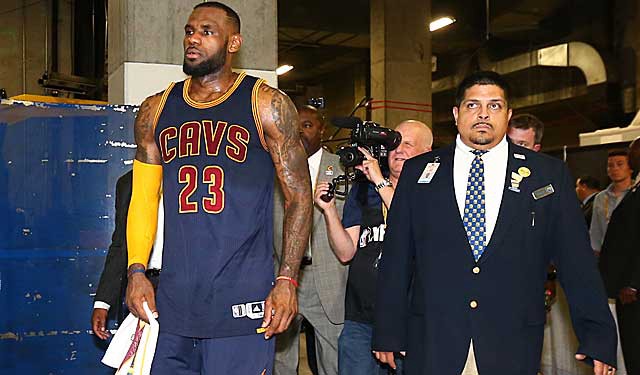
Immediately following the game, his mental and physical recovery begins. The first step is appropriate nutrition.
1 — Nutrition
The goal is to replenish LeBron’s glycogen (energy stores), decrease protein breakdown (to maintain muscle mass and quality), and increase protein synthesis (to help repair any damage caused by the game).
LeBron starts with hydrating his body with water and carbohydrate rich fluids. The water helps fight against dehydration and the carb rich fluids replenish his energy stores while increasing nutrient transport efficiency.
After the immediate post-game nutrition, LeBron’s focus turns to reducing inflammation.
2 — Managing inflammation
Inflammation is actually an important healing response for the body but it can also cause pain. For LeBron, who needs to to recover and be pain-free quickly, it makes sense to reduce inflammation.
Following the game, LeBron first jumps into an ice bath:
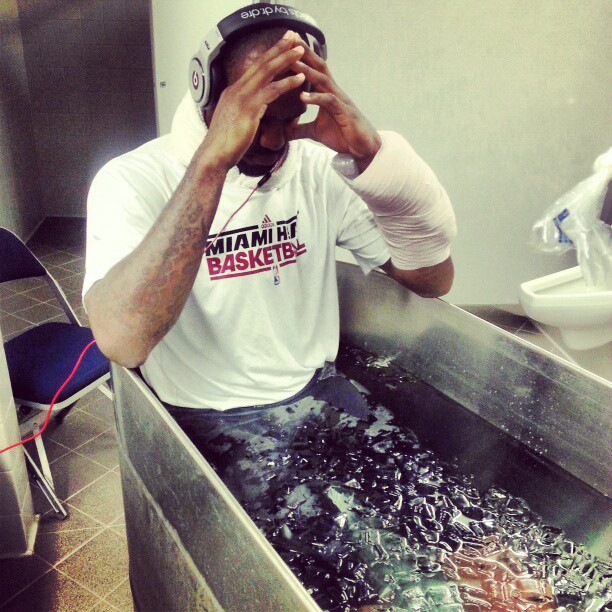
Although there’s conflicting evidence about the effectiveness of ice baths, the idea is that by reducing body temperature, metabolism is slowed and blood vessels constrict (tighten) to reduce inflammation and flush toxic by-products out of muscles.
Additionally, the psychological component cannot be ignored. Many athletes report feeling better after an ice bath, including LeBron.
After this ice bath, LeBron puts on a pair of compression tights (you can send me a check later Nike):

There is decent evidence that wearing compression tights after strenuous activity can help reduce inflammation and eliminate toxic by-products via stimulating blood flow to the muscles. For these benefits to occur, the compression gear must be very tight and it must be worn for multiple hours after the activity.
LeBron wears these tights from post-game, through media responsibilities, and through the plane or car ride home.
Additionally, from a mental perspective, LeBron has said that he feels much better after wearing the tights and he was consulted personally when Nike was creating their Recovery Hypertight compression wear (ok, so maybe LeBron’s statement needs to be taken with a grain of salt).
Once LeBron has fulfilled his media obligations, it’s time to travel…
B. In-flight
LeBron’s path to recovery (this is starting to sound like an AA brochure…) continues during the flight. The first step is, again, nutrition.
1 — Nutrition
LeBron continues to drink water (altitude promotes dehydration) and carb-rich fluid to increase his energy stores and increase the efficiency of nutrient transport.
He supplements those fluids with a meal rich in high quality protein and carbs. The protein serves to maintain muscle mass and quality, the carbohydrates help with energy stores, and these nutrients, with the help of the carb fluids he drank earlier, are being transported more efficiently to increase the rate of body wide repairs.
2 — Controlling inflammation
LeBron’s fight against inflammation also continues during the flight, especially since altitude promotes swelling. In addition to wearing the compression tights, he uses multiple other tools:
- Electrical stimulation (E-stim) machine
o This is a small device that uses an electric current to stimulate muscles and alter mechanical signals. It can be helpful for reducing pain and inflammation. Here’s what it looks like:

- Compression boots
o LeBron puts Normatec compression boots onto his legs and feet. These boots feature a programmed compression system that pulsates in a pattern to mimic muscular contraction of the legs and clear out inflammation. Here’s what they look like:
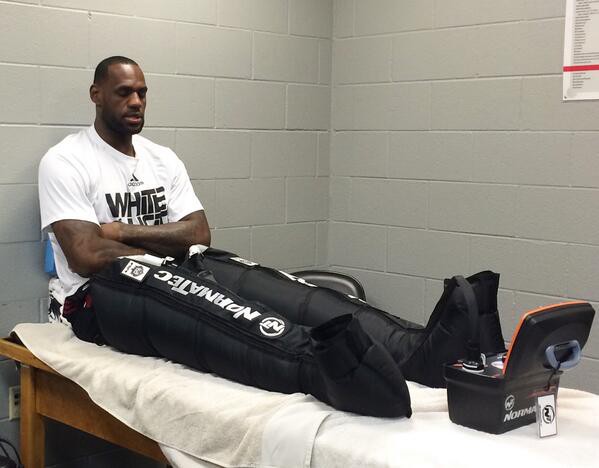
- Soft tissue work
o LeBron’s trainer and confidant, Mike Mancias, is on hand during the flight for hands-on therapeutic massage. This helps flush out swelling and provides a manual input that can reduce pain (touch is a very powerful tool).
- Gentle, active movement
o Lastly, LeBron will do some gentle movement to help flush out inflammation and increase repair. Active muscle contraction leads to increased blood flow to the muscles (blood carries nutrients and discards of waste by-products) and is the body’s way of “pumping” fluid and inflammation back into the venous and lymphatic systems.
Once the flight has landed, it’s time for LeBron to get into bed and continue the between game recovery.
It’s time to recognize the NBA’s ‘finest’ achievers.grandstandcentral.com
IV. Arrival
A. Sleep
To put it simply, sleep is vital for LeBron’s recovery.
Sleep is key for creating a healing environment for the mind and body. For example, sleep deficits have been linked to decreases in reaction time, access to glycogen and carbohydrates (2 key energy sources for the body), and an increase in cortisol (the body’s main stress hormone). All these negatively affect how you think and move.
Generally, sleep is the foundation for the next day. It makes everything better and is especially important for LeBron who endures such a mental and physical toll on a daily basis.
B. Between games
LeBron uses a number of tools and routines to speed up his recovery process between games.
1 — Hot-cold contrast baths
Hot-cold contrast baths are exactly as they sound: a bath where the water temperature changes back and forth between hold and cold.
The science behind it is that the cold temperature constricts (tightens) blood vessels and the hot temperature dilates (widens) blood vessels. This alternating motion of the blood vessels mimics the “muscle pumping” action of the body — reducing inflammation and removing metabolic wastes from the muscles.
There is some evidence to support this and generally, it’s been shown to have about the same therapeutic benefit as an ice bath. LeBron, however, simply does both…and why the heck not?
2 — Soft tissue treatment
LeBron receives soft tissue hands-on treatment from his trainer, Mike Mancias, to work on specific pain points and lingering issues.
Soft tissue work is beneficial for muscle tissue quality and overall relaxation.
3 — Light conditioning work (such as a stationary bike)
Similar to on the plane, LeBron uses active recovery to stimulate blood flow to his muscles to promote repairs and flush inflammation.
4 — Weight room training
During the season, LeBron’s weight room regiment is focused on muscular endurance and efficient workouts, 7 days a week.
These workouts consist of compound movements (whole body movements like deadlifts, squats) with high repetitions and relatively low weights.
Here’s an example:

5 — Core stability
Parallel to his off-season workouts, LeBron continues to focus on core stability and maintaining the functional core strength that he built during the off-season.
Core strength sets the foundation for all movement and stabilizes the lower back as well. For LeBron, who has suffered from lumbar (low back) problems the past 2 seasons, a strong and endurable core is key for his lumbar health.
6 — Cardiorespiratory
LeBron doesn’t set aside time for specific cardio activities because he gets so much cardiorespiratory training during games and practices. Rather, his cardio activities are functional — movement and running during practice, getting shots up, and so on.
7 — Hyperbaric chamber
LeBron uses a single-unit hyperbaric chamber to increase the amount of oxygen getting to his muscles and tissues. Here’s what this chamber looks like:
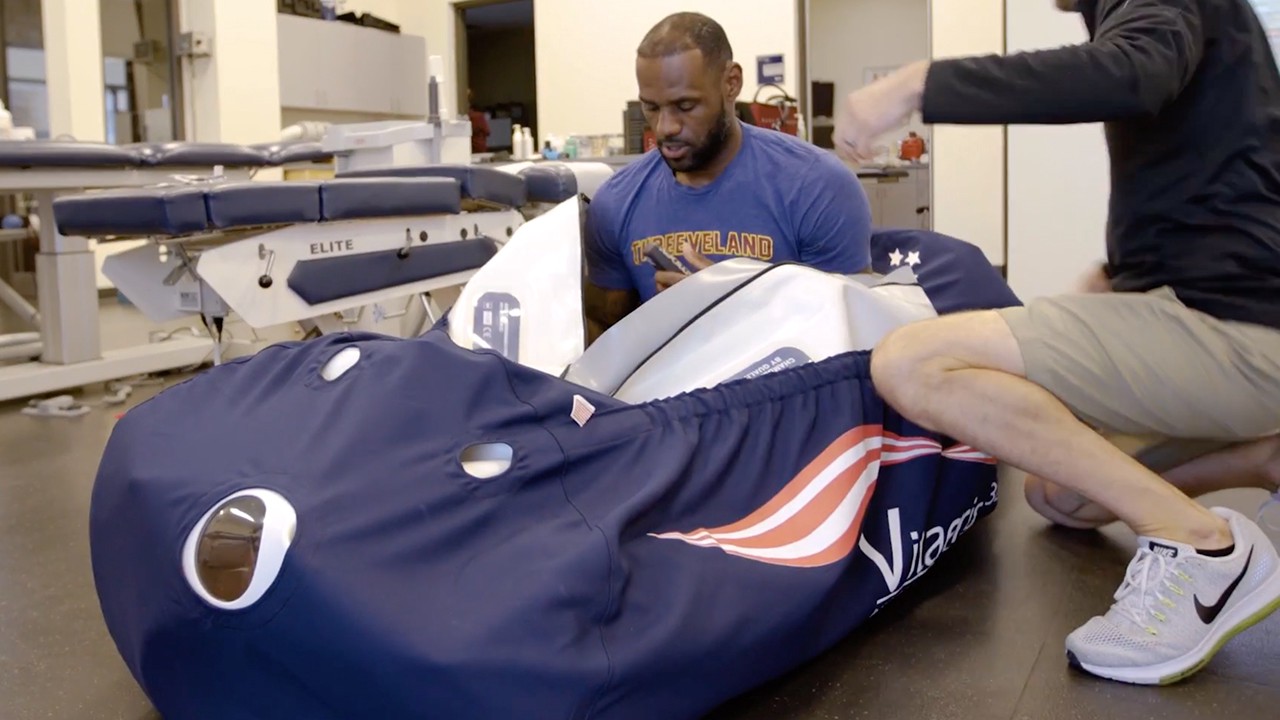
The science behind it is that pumping in 100% oxygen at a pressure higher than the atmosphere (defined as 1 absolute atmosphere or 1 ATA) leads to increased oxygen in the system. For example, at 2ATA, LeBron’s blood oxygen content is 2.5% higher than normal.
This increased oxygen level aides in recovery because increased oxygen equals more energy for the body’s cells and repair processes.
8 — Cryotherapy
LeBron uses a cryotherapy chamber to mimic the therapeutic effects of an ice bath (decreased inflammation and pain) in significantly less time. You stand in a chamber that uses gasified liquid nitrogen to cool the air around you to as low as -200 degrees F.
Here’s a picture and a real time video of the entire process:
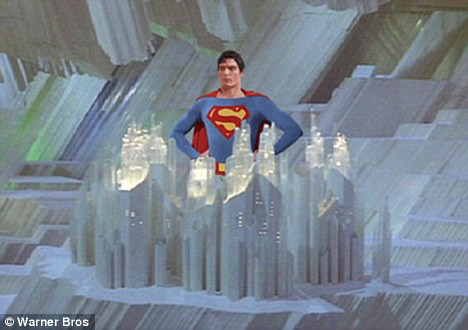
But seriously:
This idea of super-cooling the body got its start in Japan in the early 70’s (pretty sure this is how Goku recovered from fights), became popular in western Europe in the 90’s, and recently has gained traction in the US and Australia.
The overall evidence behind it is still lacking but there is increasing evidence that cryotherapy can help mitigate inflammatory markers, has anti-oxidant properties, and in some cases, better sleep.
However, it may not be as effective as good old trusty ice. Even though cryotherapy induces much lower temperatures than ice, it isn’t applied directly to the body and therefore doesn’t penetrate as deep through the layers of skin and fat to reach soft tissue like LeBron’s muscles.
This may explain why the therapeutic effects of cryotherapy have been shown to be greater for individuals with higher lean body mass— there’s less fat to get through. LeBron obviously falls in that category.
Regardless of that ice vs cryotherapy tangent, LeBron just does both and he was in fact one of the first players to have his own cryochamber.
As LeBron’s days between games come to an end, he gets a great night’s sleep and then it’s on to game day…
We have the technology, it's time to start using it.grandstandcentral.com
V. Game day
LeBron’s game day recovery is pretty simple because most of the recovery work has already been done.
The focus on game day is to eliminate any lingering or specific pain points and get ready for the game, both mentally and physically.
LeBron participates in the team shoot-around and meetings leading up to the game and gets in a pre-game meal of high quality protein and carbs such as chicken breast and a little pasta.
With the process complete, it’s time to hit the court. Afterwards, he starts it all up again — back on the grind.
We’ve covered both LeBron’s off-season and in-season methods, but there’s one last section left — overlying factors that encapsulate both the off and in-season
VI. Macro (contextual) factors
Regardless of off-season or in-season, LeBron has key contextual factors that benefit his recovery process.
For one, LeBron has a great support structure and staff around him. I’ve mentioned his trainer Mike Mancias multiple times now and other members of his team include:
- Donnie Raimon, the former Navy SEAL who serves as his biomechanist
- the team nutritionist
- the Cavs’ team of physical coaches and trainers, and personal chefs and masseuses
- from a business and personal perspective — LeBron has his trusted agent Rich Paul, business manager Maverick Carter, and wife, Savannah, who takes care of all family matters in the short-term.
Each is critical to LeBron’s recovery because they allow him to focus solely on recovery and preparing for the next game, rather than being distracted with other thoughts. The piece of mind that comes from having trusted staff and family around you and being able to delegate tasks without worry is crucial for decreasing mental noise and decreasing overall stress.
Additionally, having a consistent and dedicated routine, in and of itself, is a boon for recovery because it promotes consistency and peace of mind that eliminates uncertainty and worry (“how am I going to get ready for the next game?” “everyone is depending on me, will I be ready to play?”).
Quieting these thoughts and mental foxholes helps to down-regulate the stress response and mitigate chronic stress.
Chronic stress is a complete recovery and performance killer. It biases systemic inflammation, makes you more sensitive to pain, decreases frontal lobe activity (the ability to think clearly), and generally screws with every system in your body.
Along with improved sleep, the ROI of reducing stress is the highest — it benefits everything else.
In addition to the people and support around him, LeBron has the funds to invest millions of dollars into these tools. For example, LeBron has purchased many of the tools I mentioned in the “between games section” for his house.
According to Brian Windhorst, James has a full gym, ice tub and hot tub, and hyperbaric chamber in his home. He doesn’t have to get up and go to the facility or worry about access — he has it all immediately on hand which makes the recovery process and routine that much easier and more effective.
Exploring the hypothetical impact of a superstar athlete coming out and identifying under the LGBTQ2IA umbrella.grandstandcentral.com
VII. The Takeaway
The overall point of this piece was to take you through the techniques and gadgets that LeBron uses on his quest for recovery and expose you to the science behind them. However, the major point I want to leave you with is this:
LeBron’s durability and ability to perform at this level for this long is a testament to how committed and dedicated he is to short, medium, and long-term proactive and preventative care. It isn’t some inexplicable mystery.
Many other players and teammates have commented on how LeBron prioritizes his rest, recovery, and health over anything else.
KD said the following:
“One thing I learned about LeBron — I worked out with him — LeBron takes care of his body…he knows that in order for him to play that long, his body has to be up. He has to keep that in shape. Like, he works on his body, like, religiously.”
Iman Shumpert said:
“Like, people may think it’s diva-ish, but that man will get his treatment and be late. ‘I’ll be late to this event, even though y’all paid me all this money to be here. Because I gotta do everything I gotta do to make sure I preserve my body so I can do this tomorrow.’”
And LeBron himself:
“It’s every day. Around the clock every single day, working on my body…either with treatment or working on my body in the weight room. Continuing just to build strength throughout the season when everybody else is kind of tearing down … not putting too much pounding on my legs when I’m on the court, but being very efficient.”
Longevity, in my eyes, is what separates a good or great player from a legendary one. Much of that longevity comes from a mentality, work ethic, and commitment level that gets taken for granted because as viewers we aren’t privy to seeing it.
Hopefully this article pulled back the curtain so we can gain a true appreciation for the daily, yearly, decade+ long process it takes to become a legend like LeBron James.

Dr. Rajpal Brar is a Doctor of Physical Therapy (DPT) focused on holistic injury rehab & prevention, stress management, & performance. He’s also the founder of theinjuryinsight.com and 3CB Performance.

Come for the Rookie of the Year debate, stay for the incessant Celtics hate.grandstandcentral.com
